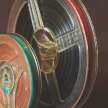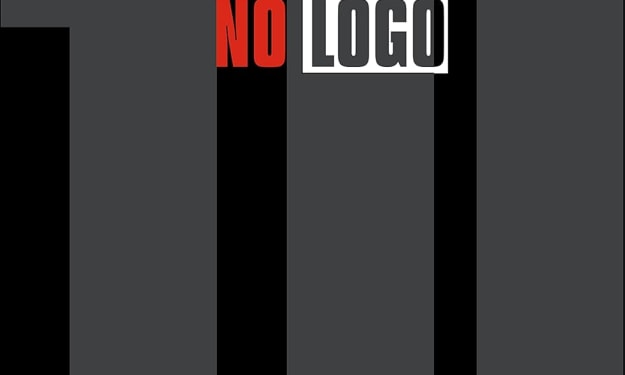Shot of the Movie: Laura (1944)
the mind on screen . . .

This article is one of a series - Shot of the Movie - and may contain spoilers.
In the early runtime of Laura (1944), you may be pulled in more by the dialogue than the visuals. I certainly was. Rich in subtext, with great banter between a no-nonsense detective and his elitist foil, this film's dialogue is sleek and has a rhythm that moves the film into its more interesting set pieces.
That's not to say that the visuals are bad. By no means. The movie is a fine contender in the ring of Film Noir. Visually, it packs a punch with chiaroscuro stylings - characters draped in the shadows and plenty of rainy nights. But for the first half of the film, I found myself more attracted to the well-crafted dialogue (particularly the dialogue delivered by Clifton Webb) than I was to the presumably equally well-crafted visuals. And then, just when I was getting comfortably complacent, low and behold, the Shot of the Movie arrived.
"This is beginning to assume fabulous aspects." - Waldo Lydecker
Film Overview
Laura (1944) is based on a novel by Vera Caspary. It was adapted to the screen under the direction of Otto Preminger, with screenplay written by Jay Dratler, Samuel Hoffenstein, and Betty Reinhardt. Winner of the Academy Award for "Best Black and White Cinematography" and nominated for six other categories, Laura (1944) centers around a New York City Police Detective and his efforts to solve the murder of Laura Hunt. Never being shown the body, the audience discovers the grizzly details of the titular character's suspected murder via a series of interrogations, lightly cloaked as conversations between Det. McPherson and Laura's closest acquaintances (read: suspects).
In solving the mystery, Det. McPherson spends time getting to know the suspects, as well as the victim, herself, by allocating a majority of his time to the crime scene, her apartment. While the first half of the movie is somewhat slowly paced, when Laura herself shows back up at her apartment (very much alive), the second half of the movie flies.
Context Scene
Det. McPherson, tells the duty cop watching Laura's apartment to take a long lunch (or well, dinner; it's late). McPherson, spends a few minutes walking around Laura's apartment, having walked these same steps several times before. He seems tense and agitated. He finally stops in front of Laura's portrait, staring at the mural. After inspecting it for a few beats, he turns toward the camera.
This is the Shot of the Movie.

The Shot of the Movie
I'll be honest. It didn't hit me right away that this was the shot. In fact, the camera holds here. It lingers almost two minutes, watching McPherson lose his coat and accessories, and I had to ask myself, why? And then it struck me how clever this shot actually was. It did that by checking off a very big requirement for my Shot of the Movie criteria; in that, it's an exemplar of visual storytelling.
This shot has two very important things packed into it's frame, Detective McPherson (in the center) and Laura's portrait (in the background). What director Otto Preminger and (Academy Award Winning Cinematographer) Joseph LaShelle accomplished in this scene was showing the inner workings of McPherson's mind. That is, they showed that Laura is now consistently in the back of his mind. By placing McPherson in the foreground and literally putting Laura in the background behind his head, they have accomplished a visual for the metaphor.
This is the first time we really see how impacted McPherson is, not only by the investigation, but the idea of Laura, herself. Prior to this scene, McPherson has already met the match of the key suspect (the smartest guy in the room), with a cool ease characteristic of the noir detective. Notably, he has a small hand-held dexterity game that he plays throughout the first half of the film. It's a great way for his character to appear aloof and when called out on it, he tells a suspect:
"It takes a lot of control. Would you like to try?" - Det. Mark McPherson
Playing into the cat-and-mouse type banter developed between these characters, this line is fabulous against the visual of the game. It might appear he's simply quipping back at the suspect, attempting to establish some level of dominance, but through a nice bit of subtext, McPherson is actually assessing his suspect's limits, and hinting to both the suspect and the audience that he isn't quite convinced of the level of control this man is capable of.
McPherson has a bunch of these moments in the first half of the film, using his surroundings as props to pull suspects in unassumingly and use their statements against them later, to catch them in lies. But, here, in the Shot of the Movie, he is alone. The surroundings only have questions for him, and he's losing control. His character is growing along with the mysteries in the plot, and this all starts with the Shot of the Movie, being unable to get Laura out of the back of his mind.
About the Creator
Bethany Yoder
Fascinated with the art and science of story-telling, particularly through the lens of film and the magic of subtext.






Comments
There are no comments for this story
Be the first to respond and start the conversation.